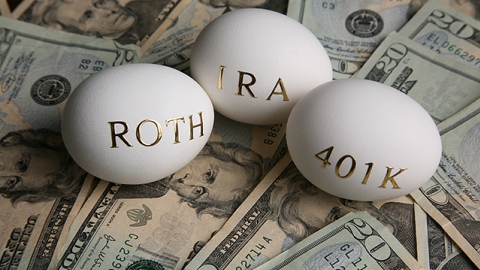World Retirement News – Do you even wonder why more and more people are retiring abroad? People are flocking to retire in Costa Rica, Mexico, and other sunny retirement destinations as their dollars are being stretched further.
 “For retirement, the answer is 4-0-1-k,” proclaimed Tyler Mathisen, then editor of Money magazine in 1996. “I feel sure that someday, like a financial Little-Engine-That-Could, it will pull me over the million-dollar mountain all by itself.”
“For retirement, the answer is 4-0-1-k,” proclaimed Tyler Mathisen, then editor of Money magazine in 1996. “I feel sure that someday, like a financial Little-Engine-That-Could, it will pull me over the million-dollar mountain all by itself.”
For this sentiment, and others like it, Mathisen was soon rewarded with an on-air position at financial news network CNBC, where he remains to this day. As for the rest of us? We were had.
The United States is on the verge of a retirement crisis. For the first time in living memory, it seems likely that living standards for those over the age of 65 will begin to decline as compared to those who came before them—and that’s without taking into account the possibility that Social Security benefits will be cut at some point in the future.
The culprit? That same thing Mathisen celebrated: the 401(k), along with the other instruments of do-it-yourself retirement. Not only did they not make us millionaires as self-appointed pundits like Mathisen promised, they left very many of us with very little at all.
You might be tempted to ask “what went wrong,” but a better question might be “why did we ever expect this to work at all?” It’s not, after all, like we weren’t warned. As early as 1986, only a few years after the widespread debut of the 401(k) and the idea that American workers should self-fund their own retirement accounts based on savings and stock market gains, Karen Ferguson who was then, as she is now, the head of the Pension Rights Institute, warned in an op-ed published in the New York Times, “Rank-and-file workers have nothing to spare from their paychecks to put into a voluntary plan.”
But her voice, and that of other critics like economist Teresa Ghilarducci, who is now at the New School and described our upcoming retirement crisis as “an abyss” in 1994 congressional hearings, were drowned out by the money and power of the financial services industry, combined with their enablers in the personal finance media who proclaim even today that if we don’t have enough money set aside for retirement, it is all our own fault.
It’s not.
No one less than John Bogle, the founder of the Vanguard Group, might come forward to declare the American way of retirement savings “a train wreck” — but no matter. A train wreck for you and me is a gravy train for the financial services sector. And in the United States, they are the only group that matters.
Folly, Fees and Frauds
On their own, the amount of money Americans have put aside for their post-work lives sounds extraordinary. According to the Investment Company Institute, the lobbying arm of the mutual fund industry, we had $20.8 trillion in retirement savings, divided between individual retirement accounts, defined contribution plans, defined benefit plans, government plans and annuity reserves.
According to the Investment Company Institute, the lobbying arm of the mutual fund industry, we had $20.8 trillion in retirement savings, divided between individual retirement accounts, defined contribution plans, defined benefit plans, government plans and annuity reserves.
When broken down to the individual level, those numbers add up to nowhere near enough money. According to a recent report issued by the National Pension Rights Council, the median amount a family nearing retirement has saved for their post-work lives is $12,000. As for the magical 401(k)? If a household where the earners are between the ages of 55 and 64 does have a retirement account, they barely hit the six-figure mark at $100,000—a far cry from $1 million we’re told we need.
Yet whether the stock market goes up, down or sideways, the financial services sector makes out when it comes to your retirement accounts. How much do they earn? Astonishingly, we don’t know the answer. In 2008, Bloomberg magazine polled a group of pension consultants and came to the conclusion that 401(k) fees alone totaled $89.1 billion annually. Ghilarducci, who recently took a more all-encompassing look at American retirement assets, and included IRAs and pensions in her total, pegged the number at $500 billion.
The industry gets away with this because it has what amounts to a captive audience. While there is some evidence that the recent Department of Labor requirement to reveal 401(k) plan fees to participants—something that was not even enacted till last year—has brought expenses down, knowledge does not leave consumers in the driver’s seat. If you discover your company plan is sub-par — the fund choices are poor, or the expenses are too high — all you can do is complain to your human resources department and hope they decide to change plans.
Think of it this way: While we hope our employers comparison shop when they select a 401(k) retirement plan to offer their employees, that’s not a given. Employees simply have to take what is given to them. It’s not like you were shopping for a blazer at Saks Fifth Avenue, looked at the price tag, and decided to go across the street to Zara instead. Unless you get a new job, you are stuck.
As a result, the most benign sounding investments can astonish with what they charge consumers unfortunate enough to put their money in their funds. Take the highly popular 401(k) offering of target date funds. These investments are meant to take the work out of investing, and grow gradually more conservative with time. Time will tell if this works for the investor, but it’s already clear it works quite well indeed for the financial services industry. According to industry estimates, they generated $2 billion in revenue in 2008, a number that is expected to increase to $13 billion by 2018.
How do they do it? In part it is the tremendous growth in assets into the investment class since the federal government in 2006 began allowing companies to default investors into them. But it is also their extraordinary fee structure. While the average fee for any mutual fund is .80 percent, the number for target date funds is a hefty 1.08 percent annually. Some funds are much, much worse. Legg Mason’s Target Retirement Series charges 1.47 percent expense ration for the privilege of taking your money. How do they get away with it? Well, the industry promotes them as “set-it-and-forget-it” funds, thereby attracting the sort of investors most likely not to ask many questions.
 And while these numbers sound like peanuts, they are anything but. As the Department of Labor reveals:
And while these numbers sound like peanuts, they are anything but. As the Department of Labor reveals:
Assume that you are an employee with 35 years to retirement and a current 401(k) balance of $25,000. If returns on your investment in your account over the next 35 years average 7 percent, and fees and expenses reduce your average returns by 0.5 percent, your account balance will grow to $227,000 at retirement, even if there are no further contributions to the account. If fees and expenses are 1.5 percent, however, your account balance will grow to only $163,000. The 1 percent difference in fees and expenses would reduce your account balance at retirement by 28 percent.
And these people are the lucky ones. Half of Americans have no workplace retirement accounts at all.
As for the claim that those without workplace retirement savings plans can simply use Individual Retirement Accounts instead? Well, the fees the industry earns on IRAs puts the 401(k) money into the shade. Brokers not working in the best interests of their clients make the vast majority of IRA investment recommendations. Not only is this quite legal, the financial services industry is actively fighting attempts by the Department of Labor to change the situation, claiming it would not be able to afford to offer many low- and middle-income investors advice under an enhanced standard of care.
Think about this for a moment: the retirement industry is actually admitting it doesn’t have a viable business model if it needs to put its customers first.
So instead, the current situation allows for the indiscriminate marketing of all sorts of financial products as long as they meet the standard of “suitability,” which could best be described as “okay.”
Nowhere is this more clear than in the marketing of annuities to the public. Annuities are among the most confusing financial products in existence.
When the academic experts discuss the need for Americans to consider purchasing annuities with their retirement savings so they don’t run out of money, they are talking about mean immediate or deferred annuities, that is a product that gives you a guaranteed stipend for life in return for a one-time payment of money.
But the products that make the big money for insurance brokers are the infinitely more complicated variable and equity indexed annuities. These are stock-market based investments. They come with multiple fees for consumers—and, high commissions for those selling them.
Not surprisingly, the combination of consumer confusion and money incentives causes no small amount of bad behavior by the sellers of annuities. All too many people are sold annuities they have no business purchasing. There is currently a case in California where a broker is looking at jail time after being convicted of selling an indexed annuity to a woman suffering from dementia. (The case is on appeal.)
I’ve sat through presentations where elderly audiences are told that Social Security’s future is “shaky” and “uncertain” and a stock-market based annuity can protect them from the likelihood of outliving their savings. Sellers tout the fact that they offer customer consultations at no charge, but are less than clear about the fees they earn from financial service and insurance companies for successfully pushing the products.
Reality Check
The response by the financial service industry to our retirement crisis has not been self-examination. There has been no attempt to ascertain if it held out a false mirage to millions of Americans. Instead, financial hustlers and their media mouthpieces say the fault lies with Americans who either did not invest their savings properly or don’t don’t have enough money saved up because we spend too much of it.
This, frankly, ignores reality. Salaries for the majority of us are, when translated into constant dollars, falling. The median household is earning eight percent less income adjusted for inflation today than it did in 2000. In the first quarter of 2013, wages fell by the greatest amount ever recorded.
At the same time, costs of things we can’t do without continue to rise. College costs have tripled since the early 1980s. The amount of money students are borrowing to pay tuition bills is skyrocketing, and all but doubled from 2005 to 2012 to $1.1 trillion. Healthcare costs have also soared. The New York Times recently reported the cost of giving birth has tripled since 1996. At the same time, patients are increasingly responsible for ever greater amounts of their medical expenses: credit reporting agency Transunion recently claimed an astonishing 22 percent rise in out-of-pocket hospital expenses over the past year.
People find it all but impossible to save in this environment. Our national savings rate hovered around 10 percent in the late 1970s and early 1980s. Today, it is a little more than 2 percent. Just take a look at what happened when companies began to adopt automatic enrollment plans for 401(k)s, that is, forcing people to opt-out of retirement plans instead of filling out papers to join up. Yes, the number of people contributing to deferred contribution accounts – but so too did what industry insiders call “the leakage” rate – that is, people borrowing against or withdrawing the monies in their accounts (and if that money isn’t repaid, the consumers withdrawing it need to pay penalties for accessing it). That number is now close to 25 percent.
The truth is this: the concept of a do-it-yourself retirement was a fraud. It was a fraud because to expect people to save up enough money to see themselves through a 20- or 30-year retirement was a dubious proposition in the best of circumstances. It was a fraud because it allowed hustlers in the financial sector to prey on ordinary people with little knowledge of sophisticated financial instruments and schemes. And it was a fraud because the mainstream media, which increasingly relies on the advertising dollars of the personal finance industry, sold expensive lies to an unsuspecting public. When combined with stagnating salaries, rising expenses and a stock market that did not perform like Rumpelstilskin and spin straw into gold, do-it-yourself retirement was all but guaranteed to lead future generations of Americans to a financially insecure old age. And so it has.
This article was partially adapted from “Pound Foolish: Exposing the Dark Side of the Personal Finance Industry.”
Helaine Olen is an associate editor at Literary Mama and a freelance writer. Her work has appeared in the New York Times, the Los Angeles Times, the Wall Street Journal and numerous other publications.

